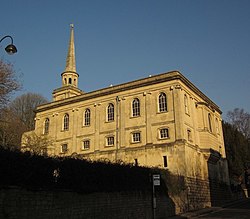
Bath is a city in Somerset, England, known for and named after its Roman-built baths. At the 2021 Census, the population was 94,092. Bath is in the valley of the River Avon, 97 miles (156 km) west of London and 11 miles (18 km) southeast of Bristol. The city became a UNESCO World Heritage Site in 1987, and was later added to the transnational World Heritage Site known as the "Great Spa Towns of Europe" in 2021. Bath is also the largest city and settlement in Somerset.

Winchester is a cathedral city in Hampshire, England. The city lies at the heart of the wider City of Winchester, a local government district, at the western end of the South Downs National Park, on the River Itchen. It is 60 miles (97 km) south-west of London and 14 miles (23 km) from Southampton, its nearest city. At the 2021 census, the built-up area of Winchester had a population of 48,478. The wider City of Winchester district includes towns such as Alresford and Bishop's Waltham and had a population of 127,439 in 2021. Winchester is the county town of Hampshire and contains the head offices of Hampshire County Council.

Frances Burney, also known as Fanny Burney and later Madame d'Arblay, was an English satirical novelist, diarist and playwright. In 1786–1790 she held the post of "Keeper of the Robes" to Charlotte of Mecklenburg-Strelitz, George III's queen. In 1793, aged 41, she married a French exile, General Alexandre d'Arblay. After a long writing career that gained her a reputation as one of England's foremost literary authors, and after wartime travels that stranded her in France for over a decade, she settled in Bath, England, where she died on 6 January 1840. The first of her four novels, Evelina (1778), was the most successful and remains her most highly regarded, followed by Cecilia (1782). She also wrote a number of plays. She wrote a memoir of her father (1832), and is perhaps best remembered as the author of letters and journals that have been gradually published since 1842, whose influence has overshadowed the reputation of her fiction, establishing her posthumously as a diarist more than as a novelist or playwright.

Swithun was an Anglo-Saxon bishop of Winchester and subsequently patron saint of Winchester Cathedral. His historical importance as bishop is overshadowed by his reputation for posthumous miracle-working. According to tradition, if it rains on Saint Swithun's bridge (Winchester) on his feast day it will continue for forty days.

Christopher Anstey was an English poet who also wrote in Latin. After a period managing his family's estates, he moved permanently to Bath and died after a long public life there. His poem, The New Bath Guide, brought him to fame and began an easy satirical fashion that was influential throughout the second half of the 18th century. Later he wrote An Electoral Ball, another burlesque of Bath society that allowed him to develop and update certain themes in his earlier work. Among his Latin writing were translations and summaries based on both these poems; he was also joint author of one of the earliest Latin translations of Gray's Elegy Written in a Country Churchyard, which went through several editions both in England and abroad.
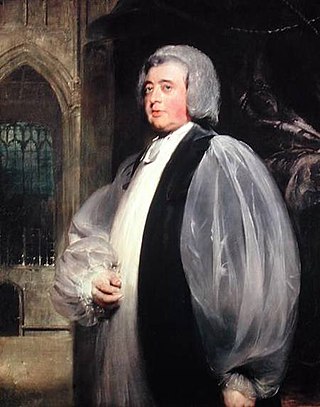
John Moore was an English clergyman who was Archbishop of Canterbury in the Church of England.
John Palmer was an English architect who worked on some of the notable buildings in the city of Bath, Somerset, UK. He succeeded Thomas Baldwin as City Architect in 1792. He died in Bath.

The cemetery has had various titles including The Cemetery by the Common, Hill Lane Cemetery and is currently known as Southampton Old Cemetery. An Act of Parliament was required in 1843 to acquire the land from Southampton Common. It covers an area of 27 acres (11 ha) and the total number of burials is estimated at 116,800. Currently there are 6 to 8 burials a year to existing family plots.
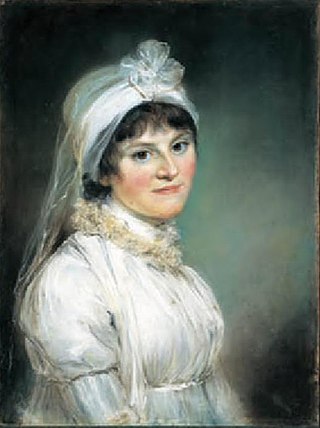
Barbara Ann Wilberforce was the spouse of abolitionist and MP William Wilberforce.

Walcot is a suburb of the city of Bath, in the Bath and North East Somerset district, in the ceremonial county of Somerset, England. It lies to the north-north-east of the city centre, and is an electoral ward of the city.

Rear Admiral Charles John Austen CB was an officer in the Royal Navy and the youngest brother of novelist Jane Austen. He served during the French Revolutionary and Napoleonic Wars, and beyond, eventually rising to the rank of rear-admiral.
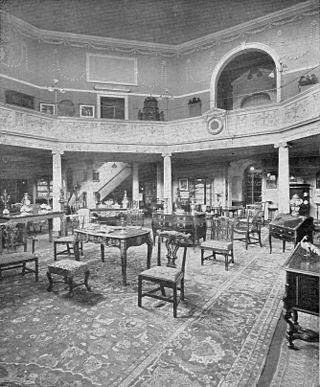
The Octagon Chapel in Milsom Street, Bath, Somerset, England was built in 1767 and has been designated as a Grade II* listed building.

Gay Street in Bath, Somerset, England, links Queen Square to The Circus. It was designed by John Wood, the Elder in 1735 and completed by his son John Wood, the Younger. The land was leased to the elder Wood by Robert Gay, MP for Bath, and the street is named after him. Much of the road has been designated as Grade I listed buildings.

The Paragon in the Walcot area of Bath, Somerset, England is a street of Georgian houses which have been designated as listed buildings. It was designed by Thomas Warr Attwood. It now forms part of the A4.

Locksbrook Cemetery is a municipal cemetery located in Lower Weston, Bath, England. It was opened in 1864 as Walcot Cemetery, and occupies 12 acres (4.9 ha), originally serving the parishes of Walcot, Weston and St Saviour's. The cemetery was closed for general use in 1937 with over 30,000 interments there, though additional burials in existing graves continue. The majority of the cemetery was for about 29,500 burials from Walcot parish, with the north of the cemetery for Weston and St Saviour parishes.
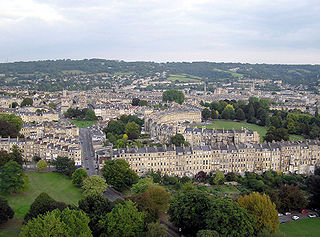
The buildings and architecture of Bath, a city in Somerset in the south west of England, reveal significant examples of the architecture of England, from the Roman Baths, to the present day. The city became a World Heritage Site in 1987, largely because of its architectural history and the way in which the city landscape draws together public and private buildings and spaces. The many examples of Palladian architecture are purposefully integrated with the urban spaces to provide "picturesque aestheticism". In 2021, the city was added to a second World Heritage Site, a group of historic spa towns across Europe known as the "Great Spas of Europe". Bath is the only entire city in Britain to achieve World Heritage status, and is a popular tourist destination.
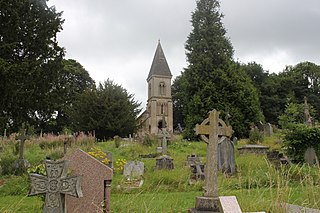
The Anglican Bath Abbey Cemetery, officially dedicated as the Cemetery of St Peter and St Paul, was laid out by noted cemetery designer and landscape architect John Claudius Loudon (1783–1843) between 1843 and 1844 on a picturesque hillside site overlooking Bath, Somerset, England.

St Swithun upon Kingsgate is a Church of England church in Winchester, Hampshire, England, built in the Middle Ages in the Early English style. Located above the medieval Kingsgate, one of the principal entrances to the city, the church is unusual in forming a part of the fabric of the old city walls. St Swithun's first appears in 13th century records, and under the fictional name of St Cuthbert's, is mentioned in Anthony Trollope's novel The Warden.

The following is a timeline of the history of the city of Bath, Somerset, England.
George Loder was an English conductor, and composer of orchestral music, operas and songs. During his career he lived in England, America and Australia; he conducted the first U.S. performance of Beethoven's Symphony No. 9.
